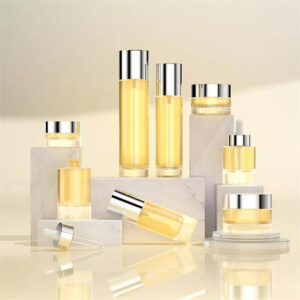
News & Blog
Great things in business are never done by one person. They’re done by a team of people. We have that dynamic group of peoples
For skincare and perfume bottles, spraying technology is a key element in enhancing their refined appearance, highlighting brand identity, and ensuring performance. This article examines the importance of spraying technology for these two product categories, detailing applicable equipment and specific process steps, analyzing unique technical challenges, and elaborating targeted quality control measures to provide a professional reference for relevant practitioners.
In the beauty and skincare industry, the packaging of skincare and perfume bottles is not only a container for the product but also a carrier of the brand image. Consumers’ first impression of these products often stems from their packaging appearance. Spraying technology, by creating a unique coating on the bottle, can impart a high-end, fashionable feel while also meeting functional requirements such as protection, becoming a key factor in enhancing product added value.
The importance of spraying technology for skincare and perfume bottles far exceeds that of ordinary glass products, manifesting itself in multiple aspects such as appearance, brand expression, and functional protection.
From a cosmetic perspective, skincare and perfume, as vehicles of fashion and beauty, demand exceptional sophistication and appeal in their packaging. While the inherent transparency of glass offers simplicity, it struggles to satisfy brands’ pursuit of unique styles. Spray coating allows for the creation of bottles with a variety of finishes, including matte, pearlescent, and metallic lusters. For example, many high-end perfume brands employ metallic spray coatings paired with gilded patterns to create a luxurious and elegant aesthetic. Natural skincare brands, on the other hand, prefer matte finishes to convey a natural and pure brand identity. Furthermore, spray coating allows for precise color matching, perfectly aligning the bottle’s color with the brand’s visual identity and enhancing product recognition.
In terms of brand expression, spray coating is a crucial tool for conveying brand storytelling. Different spray effects can reflect a brand’s positioning and tone. For example, a simple, solid color spray coating is suitable for minimalist brands, while complex finishes like gradients and contrasting colors are more popular with young, trendy brands. A uniquely designed spray-coated bottle can quickly capture consumers’ attention on a crowded shelf, strengthening their brand image and ultimately enhancing their market competitiveness. Data shows that skincare and perfume bottles using personalized spray coatings can generate over 30% more attention than standard packaging.
In terms of functional protection, skincare and perfume bottles contain a variety of active ingredients and volatile substances, placing high demands on the packaging’s protective properties. Spray coatings can enhance the seal of glass bottles, reduce contact between the contents and the external environment, and slow product deterioration. Furthermore, the coating improves the bottle’s wear resistance, preventing scratches caused by friction during transportation and use that could affect its appearance. For perfumes containing ingredients like alcohol, chemical-resistant coatings can also prevent corrosion and ensure product safety.
Due to the diverse shapes and small sizes of skincare and perfume bottles, and the extremely high requirements for spraying precision, the spraying equipment suitable for these products differs from that for larger glass products, prioritizing greater precision and flexibility.
Regarding pre-treatment equipment, for these small glass bottles, the washing machine utilizes a miniature multi-tank cleaning system, combining high-pressure spraying and ultrasonic cleaning to remove oil, dirt, and impurities from both the inside and outside of the bottles. The ultrasonic frequency, typically 40-60kHz, can penetrate deep into the fine lines and corners of the bottle, such as the bottle mouth, achieving a cleaning efficiency of 1,000-2,000 bottles per hour (using a 50ml perfume bottle as an example). The dryer utilizes a combination of hot air circulation and vacuum drying, with a controlled drying temperature of 60-80°C to prevent damage to the bottles and ensure no residual moisture. The drying time is approximately 5-10 minutes.
Spraying equipment is crucial. Electrostatic spraying equipment, due to its high precision and high utilization rate, is the preferred choice for spraying skincare and perfume bottles. Small electrostatic spray guns can precisely control the atomized paint particles to a size of 10-20μm, ensuring a uniform and fine coating. For bottles with complex surfaces, grooves, and other structures, multi-axis robotic spray systems enable 360° coverage, ensuring consistent coating thickness across every surface. This equipment boasts a paint utilization rate of 85%-95%, effectively reducing paint waste and making it particularly suitable for expensive special-effect coatings. Furthermore, specialized interior spraying equipment is available for skincare glass bottles requiring interior protection, precisely applying a thin protective coating to prevent the contents from reacting with the glass.
Curing equipment must be tailored to the characteristics of small bottles, with infrared tunnel curing ovens being the most commonly used. The oven temperature can be controlled in stages: an inlet temperature of 60-80°C for solvent evaporation; a mid-section temperature of 120-150°C for coating curing; and an outlet temperature that gradually cools to room temperature to avoid cracking caused by sudden temperature changes. Curing time varies depending on coating thickness, typically ranging from 5-15 minutes, meeting mass production requirements. For temperature-sensitive coatings, UV curing equipment can be used, curing the coating within seconds through ultraviolet light, significantly improving production efficiency.
Table 1: Key Equipment and Performance Parameters for Spraying Skincare and Perfume Bottles
| Equipment Type | Main Function | Key Performance Parameters | Applicable Scenarios |
|---|---|---|---|
| Micro Ultrasonic Cleaner | Cleans impurities inside and outside bottles | Frequency 40-60kHz, Efficiency 1000-2000 pcs/hour (50ml bottle) | Pre-treatment of small glass bottles |
| Multi-Axis Robot Electrostatic Spraying System | Precisely sprays complex bottles | Atomized particles 10-20μm, paint utilization 85%-95% | Bottles with curved surfaces and grooves |
| Inner Wall Spraying Equipment | Sprays protective coatings on inner walls of bottles | Coating thickness 5-10μm, accuracy ±1μm | Skincare bottles requiring inner wall protection |
| Infrared Tunnel Curing Oven | Coating Curing | Staged temperature control 60-150°C, time 5-15 minutes | Curing for most coatings |
| UV curing equipment | Fast-curing specialty coatings | Curing time in seconds, low energy consumption | Temperature-sensitive coatings |
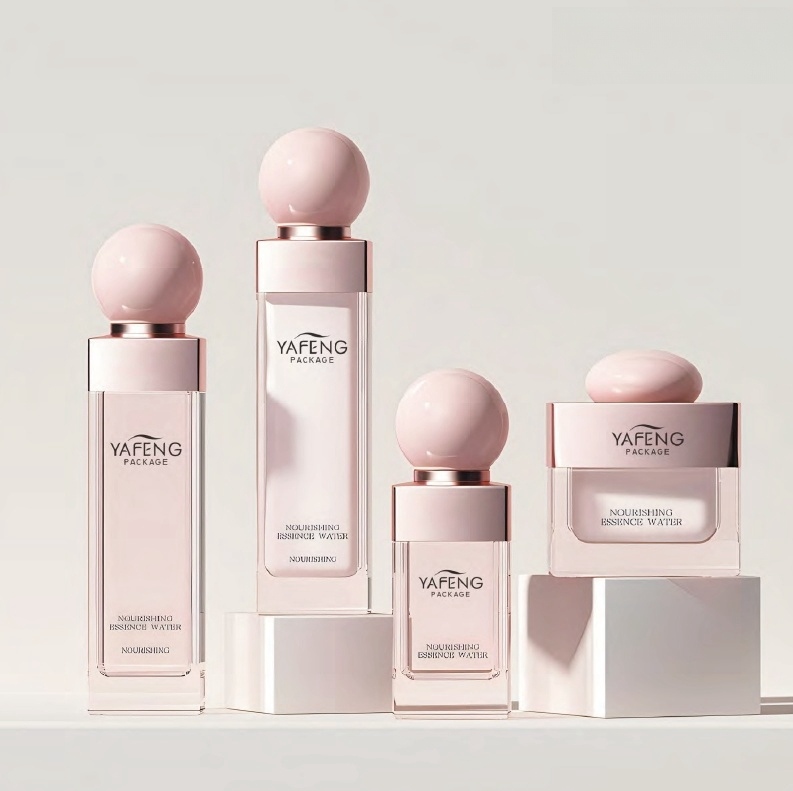
The spraying process for skincare and perfume bottles builds on the general glass spraying process, adding more refined operations to meet high-quality requirements.
The pre-treatment phase is more meticulous, beginning with sorting and screening to remove defects. Next, the cleaning phase begins with a high-pressure spray of deionized water at 0.2-0.3 MPa to remove surface dust. The bottles are then placed in an ultrasonic cleaning tank filled with a neutral detergent for 3-5 minutes. They are then sprayed again with deionized water to remove any residual detergent. Finally, vacuum drying ensures the bottles are dry and free of watermarks. Areas prone to stains, such as the bottle neck and threads, require manual wiping to ensure cleanliness.
Paint preparation must strictly adhere to environmental and safety standards, as skincare products and perfumes come into direct contact with the human body or may be sensitive to odor. The selected paint must meet food-grade or cosmetic-grade standards, such as FDA-approved water-based paint. Based on the design requirements, the base paint, colorant, and additives are mixed in the correct proportions and stirred using precision mixing equipment for 15-20 minutes to ensure a uniform mixture. The mixture is then filtered through a 200-300 mesh filter to remove impurities. The paint viscosity is controlled within 10-20 seconds (using a 4-cup viscometer) to accommodate small spray equipment. For special-effect coatings such as pearlescent and metallic, the stirring speed must be controlled to avoid damaging the effect particles.
Precision control is crucial during the spraying process. A test spray is conducted to test the coating thickness and color on a sample panel. The spray gun distance (typically 150-200mm), spray pressure (0.15-0.25MPa), and travel speed are then adjusted. During the actual spraying process, flat surfaces are sprayed in a straight line at a constant speed. For curved surfaces and grooves, the robot adjusts the angle and speed according to a pre-set program. For bottles requiring multiple layers of spraying, such as applying the base color first and then the effect layer, each layer requires a brief leveling period (1-2 minutes) before entering the curing oven for a preliminary curing period (80-100°C for 2-3 minutes) before applying the next layer to ensure interlayer adhesion.
The curing process requires precise control of parameters, with temperature and time set according to the coating type. Water-based coatings generally cure at 120-130°C for 8-10 minutes; UV coatings use ultraviolet radiation with an energy level controlled at 800-1000mJ/cm². After curing, the bottle is slowly cooled from the curing temperature to room temperature using a gradient cooling method to prevent stress concentration and cracking or peeling in the coating. After cooling, the bottle undergoes a preliminary inspection and removes any obvious defective products.
Due to the complex shapes and demanding aesthetics of skincare and perfume bottles, the spray coating process presents unique technical challenges.
Coating uniformity is challenging to control. These bottles often feature curves, corners, and grooves, making it easy for the coating to be too thick or too thin during the spraying process. For example, the curved shoulder of the bottle can easily cause paint to accumulate and drip, while the grooves inside the bottle mouth can cause leaks due to incorrect spray gun angle. Addressing this issue requires a high-precision robotic spraying system. This system uses 3D scanning technology to accurately determine the bottle’s shape and pre-determine the optimal spray path. This system is also equipped with online thickness measurement equipment to monitor coating thickness in real time and provide feedback to the control system for parameter adjustments.
Controlling for subtle defects is crucial. Consumers of skincare and perfume bottles are extremely sensitive to packaging defects. Even tiny bubbles, pinholes, or impurities can affect a product’s market acceptance. Causes of these defects include incomplete paint filtration, excessive dust in the spraying environment, and moisture in the compressed air. To address this issue, a clean spray painting workshop with a cleanliness level of at least 100,000 must be established. Paint filtration must utilize a multi-stage filtration system with a final filter screen precision of 5μm. Compressed air must be dried, degreased, and dust-removed to ensure air quality.
The consistency of special effect coatings is difficult to ensure. The effect of special effect coatings, such as pearlescent and metallic shimmer, depends heavily on the arrangement of the effect particles. During the spraying process, even slight variations in the paint viscosity or spray pressure can lead to inconsistent particle arrangement, resulting in variations in the effect between bottles. To this end, paint viscosity fluctuations must be strictly controlled within ±1 second, and a constant pressure spray system must be used to maintain stable pressure. Each batch of paint must also be tested for effectiveness to ensure consistency within the batch.
Balancing high-temperature resistance and chemical resistance is difficult. Skin care product and perfume bottles may be exposed to high temperatures (such as during summer transportation) and various cosmetic ingredients. Coatings must possess both high-temperature resistance (no discoloration above 60°C) and chemical resistance (no flaking in contact with alcohol, grease, etc.). However, these two properties often conflict; increasing high-temperature resistance may compromise chemical resistance. The solution is to develop a specialized composite coating, using a chemically resistant base layer and a high-temperature resistant top layer. This dual-layer structure achieves balanced performance.
The high quality requirements for skincare and perfume bottles require a more stringent quality control system, encompassing every step from raw materials to finished product.
Raw material quality control standards are even higher. Glass bottles must be inspected for appearance, ensuring the absence of bubbles, cracks, or stones, a smooth, burr-free bottle neck, and dimensional accuracy within ±0.1mm. Coatings must provide test reports that meet the requirements for cosmetic contact materials, including heavy metal content (lead, cadmium, etc. ≤ 10mg/kg) and volatile organic compound content (≤ 100g/L). Each batch of coating must be sampled for compatibility testing. The coating must be exposed to representative ingredients in skincare or perfume for 72 hours and observed for any abnormalities.
Quality control during the process focuses on detail. After pretreatment, cleanliness is tested using a water film method. The water film on the bottle surface must remain intact for at least 20 seconds, without cracking or shrinking. During the spraying process, 5-10 samples are collected every hour and measured with a high-precision thickness gauge. The coating thickness is controlled within 15-30μm, with thickness variations of no more than 5μm between different parts of the same bottle. After curing, coating adhesion is checked using a cross-hatch method (with 1mm grid spacing). After applying and removing 3M tape, the coating must show no coating loss.
Finished product quality inspection is more comprehensive. Appearance inspection involves visual inspection under strong light at a distance of 30cm, with each bottle inspected for at least 10 seconds. Defects such as bubbles, pinholes, scratches, and sags must be absent, and the color difference from the standard sample must be ΔE ≤ 1.0. Performance testing includes a friction resistance test: rubbing the coating 100 times with a suede cloth at 500g pressure without revealing the coating; an alcohol resistance test: wiping it 50 times with a cotton cloth dipped in 75% alcohol without discoloration or peeling; and a high-temperature resistance test: placing it in a 60°C oven for 24 hours without discoloration or cracking. A sealing test is also required: a bottle is filled with a simulated liquid, the cap is tightened, and then inverted for 24 hours without leakage.
Table 2: Quality Inspection Items and Standards for Finished Spray-coated Glass Bottles for Skincare Products and Perfume Bottles
| Inspection Item | Inspection Method | Acceptance Criteria |
|---|---|---|
| Appearance Quality | Visual inspection under strong light | No bubbles, pinholes, scratches, etc.; color difference ΔE ≤ 1.0 |
| Coating Thickness | High-precision thickness gauge | 15-30μm, thickness difference within the same bottle ≤ 5μm |
| Adhesion | 1mm-pitch cross-hatch method | 0 peeling area |
| Abrasion Resistance | 100 rubs with 500g pressure on suede cloth | No exposed bottom |
| Alcohol Resistance | 50 rubs with 75% alcohol on a cotton cloth | No discoloration or peeling |
| High Temperature Resistance | 60°C oven for 24 hours | No discoloration or cracking |
| Sealing | Filled with simulant liquid and inverted for 24 hours | Leak-Free |
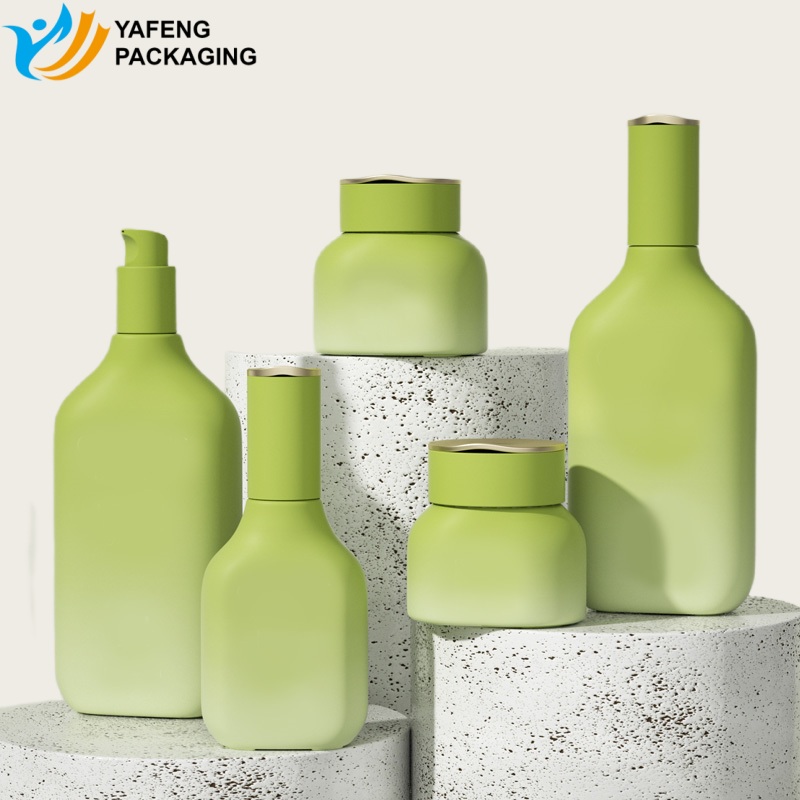
The spray coating process for skincare and perfume bottles is a delicate art form that blends technology and artistry. It not only impacts the product’s aesthetic appeal but also directly influences brand image and product safety. From specialized spray coating equipment to refined process flows, overcoming unique technical challenges to implementing rigorous quality control, every step requires utmost focus and expertise.
As the beauty industry continues to evolve and consumer packaging demands rise, spray coating technology is constantly innovating, with new technologies such as environmentally friendly UV coating and tactile spraying emerging. For companies, mastering advanced spray coating techniques can create a unique competitive advantage for their products and win consumer favor.
If you require custom spray-coated glass bottles for skincare or perfume, please contact Yafeng Packaging. We will leverage our expertise and extensive experience to provide customized solutions.
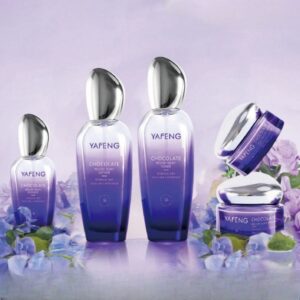
Unlock the secrets to shipping cosmetics internationally! Get expert tips on packaging, customs, regulations, and choosing carriers like DHL Express for safe and efficient delivery.
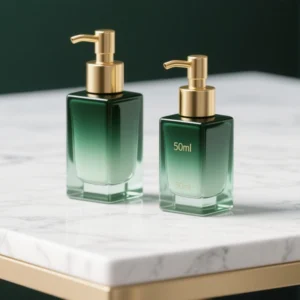
Explore cosmetic glass bottles—safety, eco benefits, types, coloring, mold costs, MOQ, and production tips—in one expert, data-rich guide.
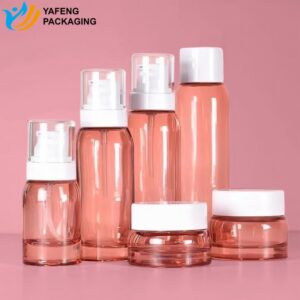
Explore 11 cosmetic packaging surface treatments to enhance aesthetics, durability & branding. Learn their pros, cons & applications to choose the best option.
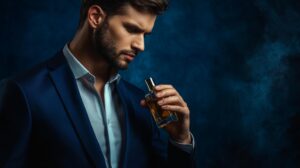
Explore why glass is the preferred material for perfume bottles, its benefits, and design evolution.
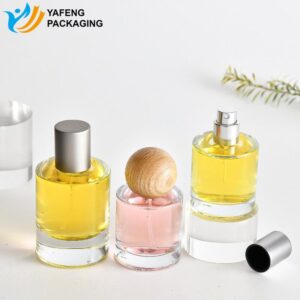
Ever wondered how long your perfume lasts? This guide explores the shelf life of opened and unopened perfumes, factors affecting longevity, and tips to make it last longer!
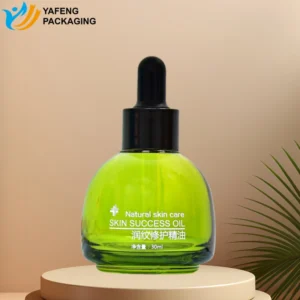
Discover how spray coating enhances skincare and perfume packaging by improving appearance, brand identity, durability, and safety with advanced technology.
Explore custom vs. stock bottles for skincare packaging. Learn how Yafeng’s solutions boost brand identity, quality, and efficiency in this in-depth guide.
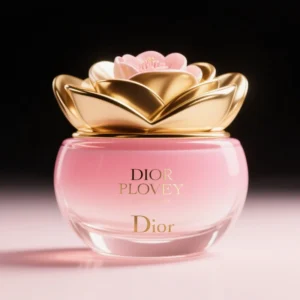
Discover how gradient color spray transforms cosmetic glass bottles, enhances brand image, and boosts product appeal with expert insights from Yafeng Packaging.
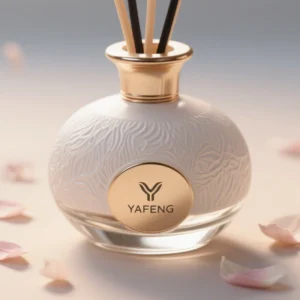
Discover how rattan aromatherapy works and why glass bottles are the best choice for long-lasting scent, safety, and sustainable, elegant packaging.
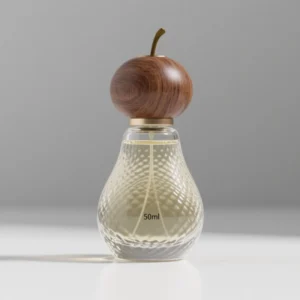
Discover the top 10 woods for perfume caps, comparing texture, pros, cons, and price to help you choose the best material for stylish, high-quality packaging.

Explore cosmetic glass bottles—safety, eco benefits, types, coloring, mold costs, MOQ, and production tips—in one expert, data-rich guide.
WhatsApp us